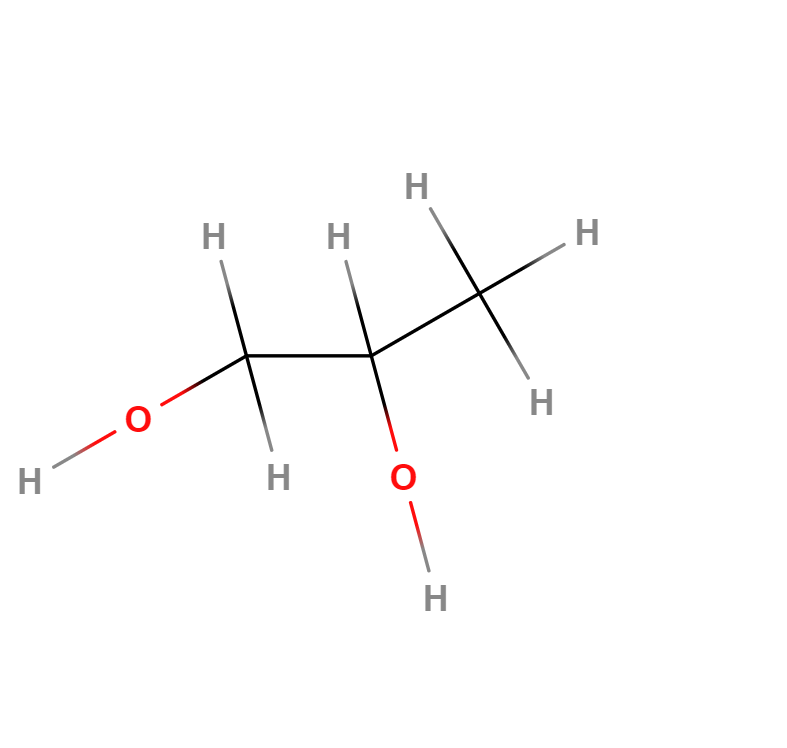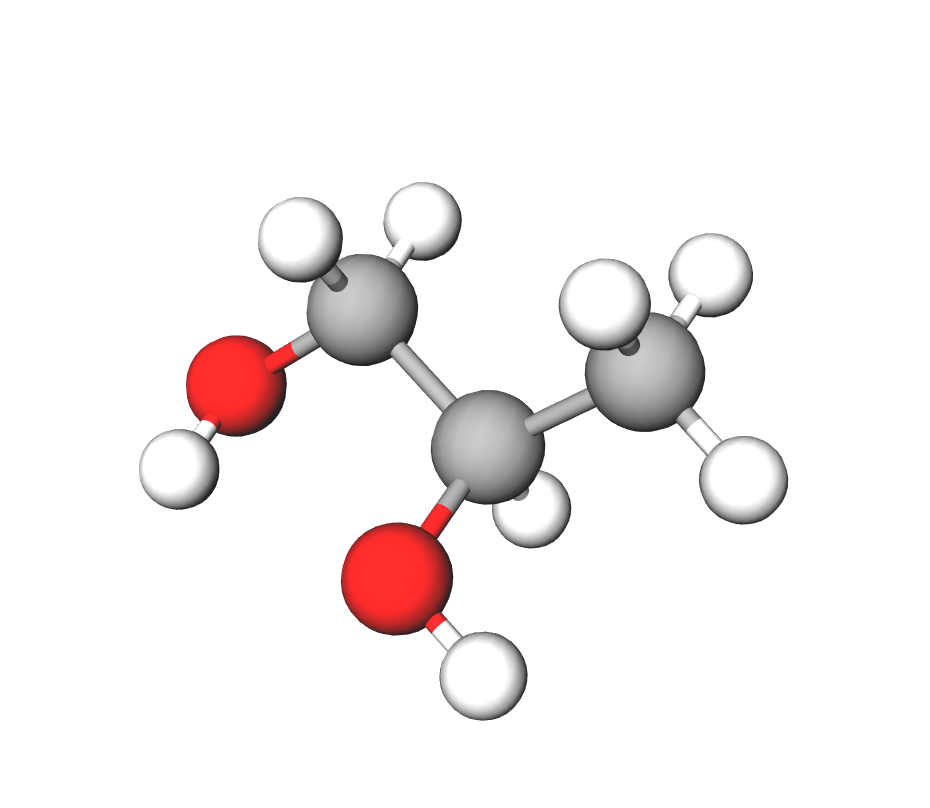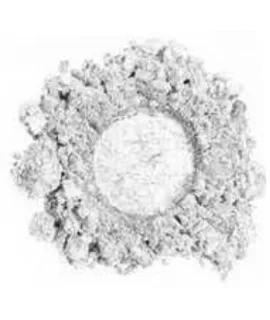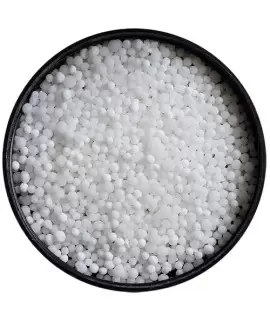PROPYLENE GLYCOL 99,9% (E1520, pharma grade), L
7.60 €
9.50 €
Save 20% CHEM054
Propylene glycol, CAS 57-55-6, 1,2-Propanediol, INCI PROPYLENE GLYCOL, 1,2-Dihydroxypropane, Methyl ethyl glycol, Methylethylene glycol.
Parameter | Attribute |
Propylene glycol | Propylene glycol, α-Propylene glycol, 1,2-Propanediol, 1,2-Dihydroxypropane, Methyl ethyl glycol, Methylethylene glycol |
Formula | C3H8O2 |
Structure |   |
IUPAC | Propan 1,2 diolis (propane 1,2 diol) |
INCI | PROPYLENE GLYCOL |
CAS | 57-55-6 |
Molar mass | 76.095 g/mol |
Density | 1,04 g/cm3 |
Solubility | Miscible |
Propylene glycol is a clear, colorless, thick, slightly volatile, odorless, neutral and hygroscopic liquid. The product is miscible with water and lower alcohols, esters and ketones in any proportion.
In cosmetics, Propylene glycol is non-toxic and environmentally friendly, sterile and as a bactericide it inhibits the growth of micro-organisms. Its use in cosmetic products allows for a lower content of preservatives. It is used in cosmetics either as a pure substance mixed with water or as an element in plant extracts. Propylene glycol is used as a solvent in the manufacture of extracts. Most importantly, a concentration of only a few percent allows a moist, non-drying layer to form on the surface of the skin, which reduces evaporation of water from the epidermis. It is therefore an excellent moisturiser. It would be difficult to find a face cream with moisturising properties that does not contain substances that retain moisture and prevent it from evaporating, thus providing long-lasting hydration. This component also facilitates the penetration of the active ingredients in the product into the deeper layers, thus significantly increasing their effectiveness. Propylene glycol also protects the cosmetic product itself from drying out, which is why it is used in light day creams, gels and cleansers. It ensures even application of emulsion preparations and, once applied, prevents the cosmetic product from accumulating and rubbing off. Previous studies carried out on animals fed high levels of propylene glycol concentrate have shown negative effects on the body, but this has led scientists to be concerned and to carry out extensive research on propylene glycol in cosmetic products, as it has been a prominent ingredient in cosmetic products for many years. Studies have shown that propylene glycol is used in cosmetics in lower concentrations, where it is applied externally, it is quickly absorbed and does not accumulate in the body, and therefore is not toxic and does not cause harm to the body, as has been shown by the studies mentioned above. For those with sensitive skin, the use of cosmetics containing high concentrations of propylene glycol is not recommended, as it is said to cause skin irritation and allergic reactions. But in most cases, low concentrations of propylene glycol used in cosmetics do not cause skin irritation. This ingredient is even used in cosmetics of natural origin and organic. Children's cosmetics also use this substance because baby's skin is highly sensitive and can react quickly to stimuli with swelling, sores or redness, and because propylene glycol has a neutral pH, a soothing, moisturising effect on skin. INCI Key Functions:
- Moisture-retaining agent: retains the water content of the cosmetic product both in the packaging and on the skin.
- Skin conditioning: maintains good skin condition
- Solvent: dissolves other substances
- Viscosity control: increases or decreases the viscosity of cosmetics
In the electronic cigarette and tobacco industry In the tobacco industry, propylene glycol is used to moisten waterpipe (hookah) tobacco and to give a more intense smoke sensation. This results in a thicker smoke, a more rich smoke and less rancid tobacco. With the invention of electronic cigarettes, propylene glycol and its mixtures with glycerine have been used extensively as a base where flavorings, nicotine additives, etc. can be easily added. In other words, it is the liquid for e-cigarettes. An e-cigarette is, in principle, like a conventional inhaler in that the propylene glycol or mixture of propylene glycol inside is vaporised by a heating element. Various mixtures with glycerol or glycerine can be found. From pure propylene glycol to 50/50 with glycerol. Different mixtures are prepared in order to obtain the required viscosity for e-cigarettes. Depending on the type of heating element (coil or plate) different viscosities of the liquid are required. If the heating element is a plate then a thick base (pure glycerine) can be used, if the heating element is a spiral then a thinner liquid is needed to allow the liquid to flow and evaporate, hence the use of glycerine/propylene glycol mixtures or pure propylene glycol. The e-cigarette device resembles a cigarette for smokers, the retracted and puffed smoke creates the illusion of smoking, but is actually propylene glycol and/or glycerol vapor. Although many e-cigarette sellers claim that it is a healthier alternative to smoking and is actually less harmful, as smoking a conventional cigarette draws combustion products into the lungs with the vapour, smoking an e-cigarette draws only the vapour, so that there are no more tars, no more cancer causing combustion products etc. But it is still not a health product, because smoking is not a characteristic of any other animal species.
➤ Key facts:
- PG is a colorless, almost odorless and tasteless liquid derived from petroleum.
- It is a much better carrier of nicotine and flavor than glycerine (VG) but produces smaller vapor clouds.
- "Veepers who like to taste new flavors will prefer the high ratio of propylene glycol (PG).
- The higher the PG ratio, the stronger the bitter sensation in the throat, more akin to inhaling tobacco smoke.
- This is one of the reasons why ex-smokers prefer a higher PG content.
- The more fluid consistency of PG makes it easier to clean the vaporiser compared to VG.
In the pharmaceutical industry, propylene glycol is used as a solvent for a wide range of components, and is particularly suitable for dissolving components that are difficult to dissolve in water. It can be found in various types of tapalum, creams and pastes. It can also be found in asthma inhalers, where it prevents the rapid evaporation of the active substances, in cough syrups, where it prolongs the action of the syrup by adhering to the walls of the throat and retaining the active substances, and in liquid vitamin supplements, where it helps to dissolve not only the water-soluble vitamins (B, C), but also the fat-soluble ones (A, D, E, groups). Due to its unique ability to penetrate the epidermis and move rapidly within cells, it is commonly used as a carrier for the parent drug. Propylene glycol also has antiseptic properties and can be used in anti-ulcer, anti-ulcer, anti-wound and anti-wound healing products, as well as in some types of condoms, where it not only acts as a lubricant, but also provides increased protection against unplanned pregnancies and against some disease-causing microbes. 1.2-Propylene glycol acts as a bactericide and has a similar effect to ethanol. It inhibits the growth of micro-organisms in solutions. The concentration depends on the type of micro-organism. In general, the effect is achieved at a concentration of 15-30% of 1,2-Propylene glycol in solution
In veterinary medicine, propylene glycol is used for its physical properties in animal food production, feed additives, veterinary preparations for the treatment of various skin diseases and wounds. In some cases, the substance is applied to the undercoat of animals to improve their appearance.
In the food industry, Propylene glycol is better known as food additive E1520. It is most commonly used in chewing gum, non-alcoholic beer, wine, syrups, essential oils, food dyes, essential oils, flavorings, baking mixes, filling mixes, sauces. Due to its hygroscopic properties to absorb and retain moisture, it is used in recipes for bread, muffins, cupcakes, cakes, icings and fillings. It is also used to stabilise the viscosity of products, to stabilise moisture, to stabilise fats and emulsions.
Important: Add the item to your basket, fill in the recipient's details and confirm your order. Thank you!
To save your precious time, we will deliver your order to your address at a time convenient for You!
*- The pictures of the goods may not correspond to the actual appearance, color, assembly or shape of the goods and their packaging. The information in the product description is of a general nature and may not correspond to the information on the packaging of the product and may not be the exact use of the product. The information given on the stocks and prices of goods may, in certain cases, differ from the actual prices and stocks of goods
**- The product complies with the requirements for food additive E1520 but is not intended for use as a food additive.
Signal word: not applicable |
Hazard icons: not applicable |
Danger phrases: not applicable |
Precautionary statements: not applicable |
CHEM054
Related products
(8 other products in the same category)










